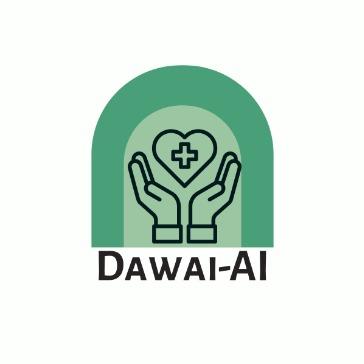Dawai-AI
Ready to help for your Health... Today, Tomorrow and Always...
Created on 27th July 2024
•
Dawai-AI
Ready to help for your Health... Today, Tomorrow and Always...
The problem Dawai-AI solves
Rural areas face a severe lack of healthcare infrastructure, leading to significant health disparities.
Many rural residents struggle with medical documents due to language barriers and low health literacy.
The scarcity of healthcare professionals in rural regions results in long wait times and delayed consultations.
Geographic isolation and high travel costs make frequent doctor visits impractical for rural communities.
These challenges result in untreated health conditions and preventable complications for rural populations.
OUR SOLUTIONS-
-
AI-Powered Healthcare
- Symptom analyzer and chatbot for initial diagnosis and medical advice.
- Personalized medicine using genomic data analysis.
-
Blockchain for Security
- Secure, immutable health records.
- Decentralized telemedicine for secure, anonymous consultations.
-
AI and IoT Integration
- Real-time patient monitoring with AI analysis for early issue detection.
- Predictive health analytics for disease prediction and risk assessment.
-
Enhanced Patient Understanding
- AI-powered EEG document reader and analysis.
- Augmented reality for medical training and patient education.
-
Mental Health and Sustainability
- AI and VR for mental health support.
- Sustainable healthcare solutions using blockchain for supply chain
transparency and AI for energy optimization.
Challenges we ran into
Frontend-Backend Integration: Ensuring seamless communication between React and Python requires setting up effective APIs and managing state between frontend and backend.
Data Privacy and Security: Handling sensitive medical data necessitates strict compliance with regulations (e.g., HIPAA, GDPR) and robust encryption and access controls.
AI Model Integration: Integrating and optimizing AI models for performance and real-time predictions can be complex, demanding efficient data processing and model serving techniques.
Scalability Issues: Managing increased traffic and data load requires implementing load balancing, scalable cloud services, and performance optimization.
User Interface Complexity: Designing an intuitive UI for complex medical data involves user research, consistency in design, and ensuring accessibility and responsiveness.
Data Management: Handling large volumes of medical data necessitates efficient storage, retrieval, and data compression techniques.
Regulatory Compliance: Ensuring compliance with medical regulations and standards involves thorough testing and validation.
Authentication and Authorization: Implementing secure user authentication and role-based access control is crucial for protecting sensitive information.
Technologies used
